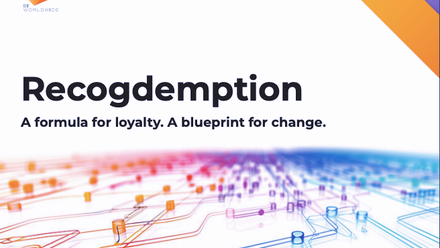How to break down barriers to better employee engagement and create a happier workplace
Employee engagement means different things to different people. Consultancy Gallup defines engaged employees are “those who are involved in, are enthusiastic about and committed to their work and workplace”.
Fundamentally, if people have good quality jobs, are motivated, well managed, well rewarded, looked after, and believe in the company they work for, they will be happier, feel healthier and more fulfilled, and are more likely to perform better, increasing productivity, providing better products or services and be more innovative.
There is clear evidence to show that low levels of employee engagement result in increased employee turnover and higher absenteeism, all of which come at a cost. But companies that value employees and treat them as their greatest asset create sustainable competitive advantage and long-term strength, and outperform those who don’t by more than 200%. Studies show that companies with a highly engaged workforce are 21% more profitable.
Remote working – engagement paradox
We know engagement matters, but why are engagement levels so low? According to Gallup, only 36% of employees in the US were engaged pre-Covid-19 – but data shows that engagement levels increased during the pandemic. Why?
Remote working brought a new focus on communications, with managers taking a close interest in their team. The use of direct communication through engagement apps was also elevated – Innecto’s Hapi app was used by some clients as a central hub for communications and saw a direct push notification use increase by 635% during the pandemic.
People liked the ability to work at home, not commute, felt more productive not being in the office and were trusted to do their work. Many organisations also put wellbeing at the focus, whether it was access to apps like Headspace, enhanced employee or provision of online yoga. Even front line workers while in a stressful state felt a sense of community, cohesion and purpose.
All in it together
All of these actions – prominent leadership reassuring employees, managerial focus, extra communications, wellbeing prioritised, a sense that we are all in it together – are some of the key activities of highly engaged workforces and when not done the same activities become the barriers.
Reversing the tide of low engagement in an organisation requires managers who care, who engage, and who give workers a sense of purpose, inspiration and motivation to perform. Such managers give people reason to stay.
So If we want people to feel engaged, we need to focus on helping them see where they fit, help them feel valued, feel part of something bigger, feel like they are contributing, making a difference, and fundamentally help our managers.
Be clear on reward and progression
From a reward perspective, particularly, we need to use clear language to describe our levels and opportunities for progression, we need relevant frameworks that enable us to recognise the contribution and value employees bring, whether financial or non-financial, we need to reinforce the commitment we make to our employees to look after their needs, whether it’s wellbeing or career growth.
Building this trust requires open and regular communication, reinforcing messaging and being transparent about the employee/employer deal – what do we expect of our employees and what will we provide in return. High levels of engagement don’t just happen by osmosis – they require several key aspects to come together, and the way we deliver our reward strategy is critical.
Supplied by REBA Associate Member, Innecto Reward Consulting
The UK’s largest independent pay and reward consultancy, transforming pay into performance.








